

Waves ebbing and flowing are part of the beauty of the coast. And part of the beauty of taking photographs is being able to capture waves in different ways. We’ll start this page with a little exploration of some of those ways to show waves. This first picture was taken with a Google Pixel 4 cell phone. It takes a good picture but allows only limited control over how the photo is taken. The location is near Pemaquid Lighthouse.
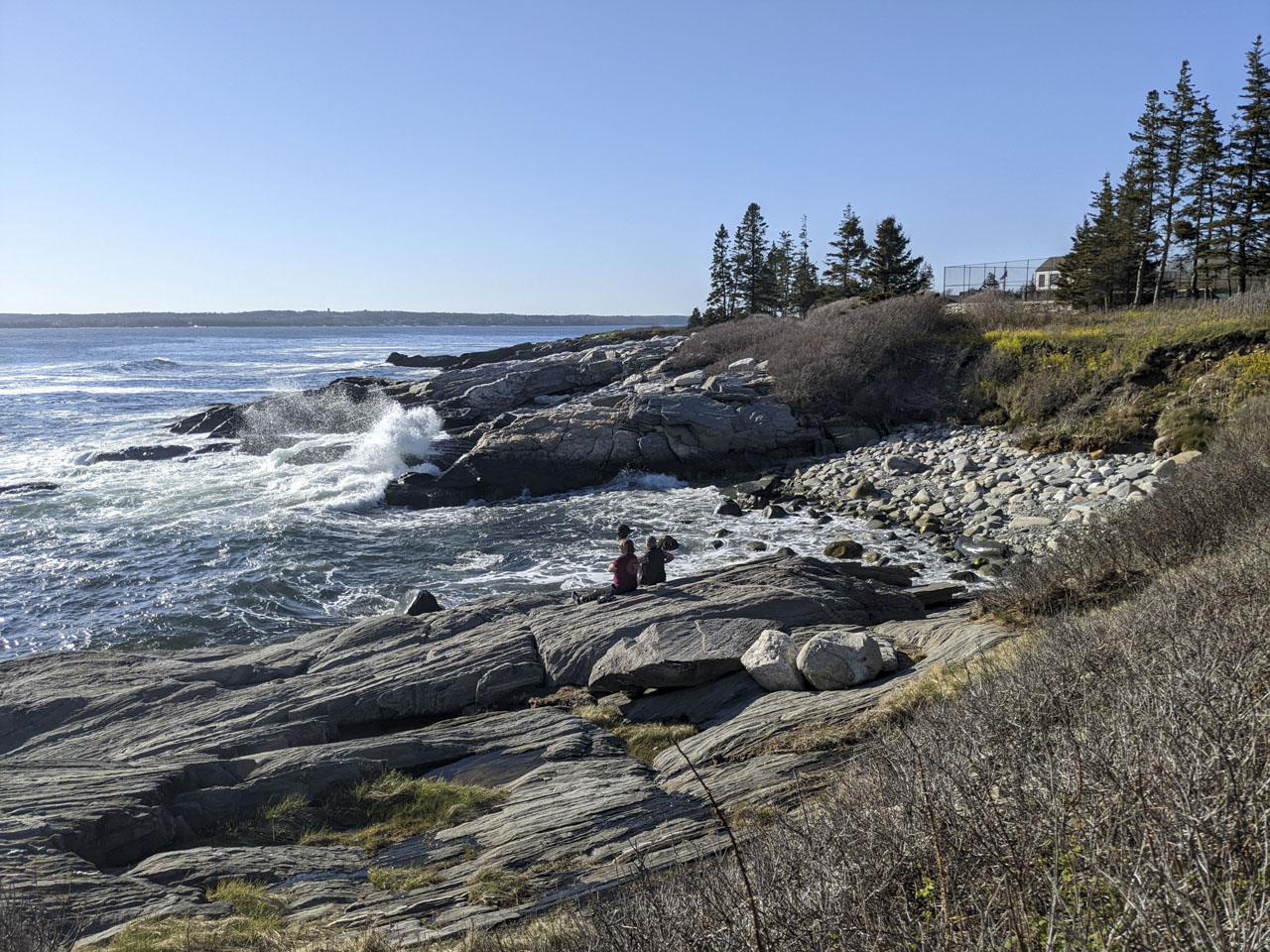
With the DSLR we have much more control over how the picture is taken. For wave photographs, the speed makes a big visual difference. In the photograph above, the phone camera selected 1/4695 second. That froze the waves in place. This next photo uses an even faster shutter speed, 1/8000 of a second. These are speeds faster than the human eye can see.
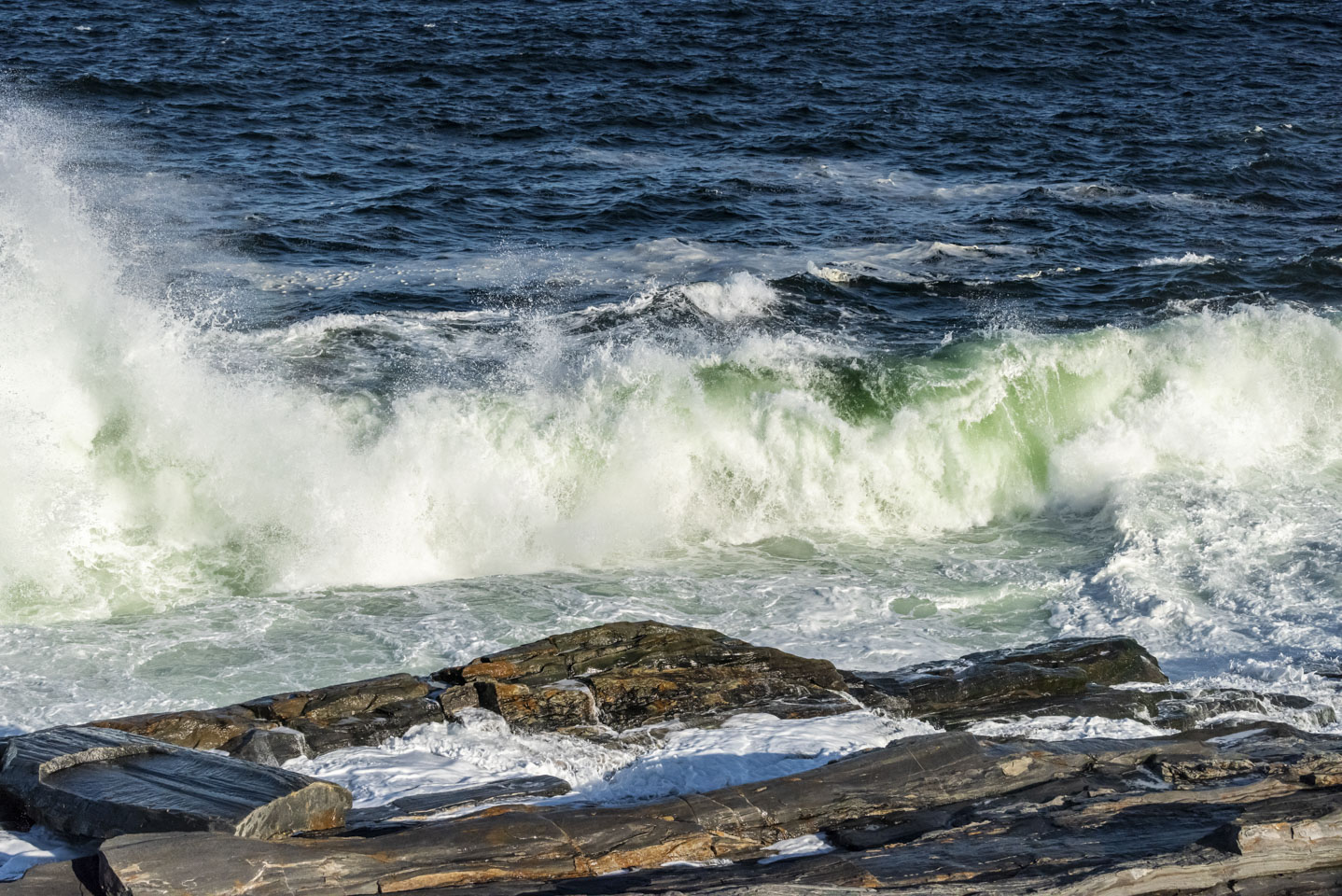
Taking a little longer with the shutter speed, 1/2000 of a second, starts to show a bit of motion. The droplet of water in the spray are not as distinct and show a little elongation.
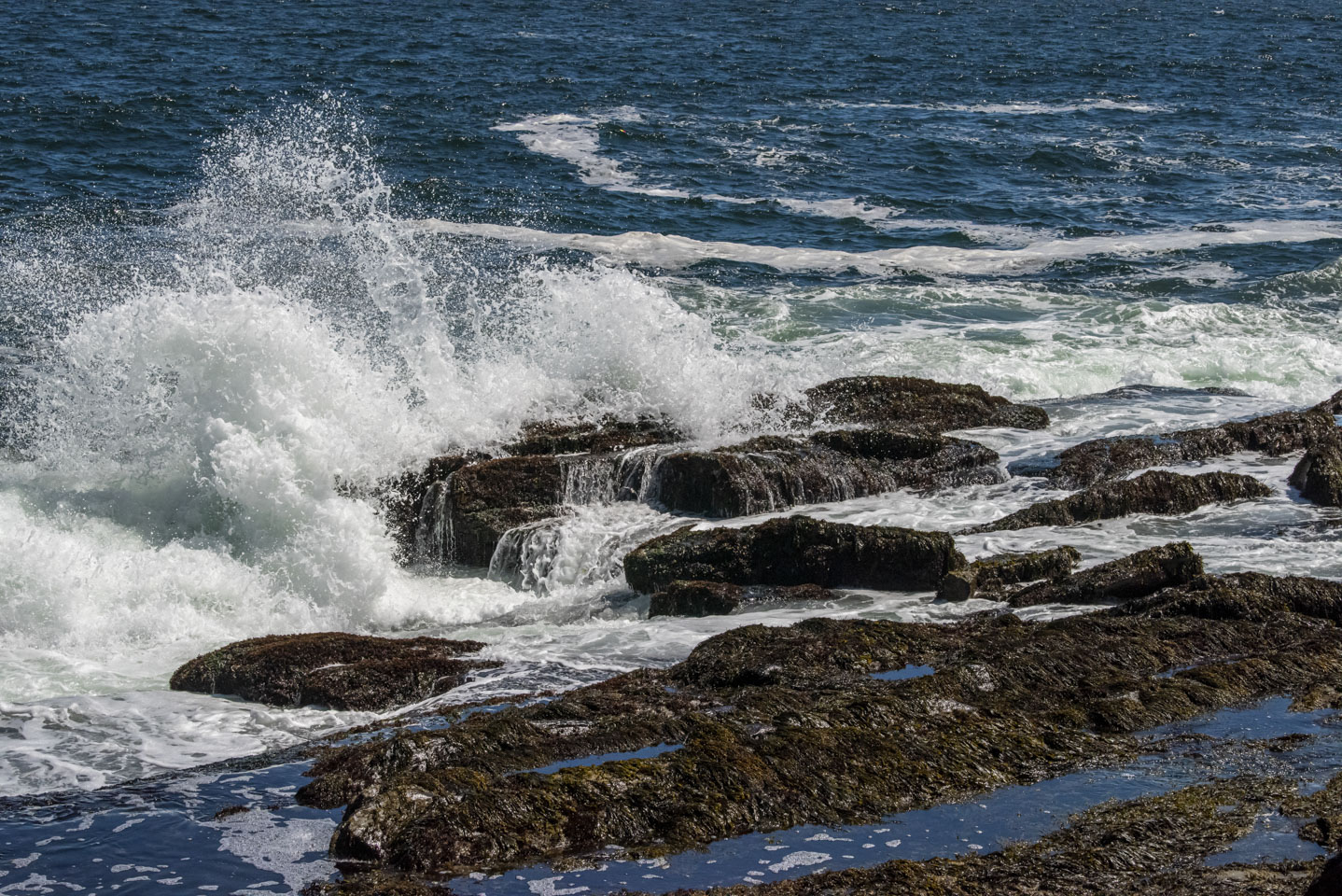
Jumping up a factor of 10, to 1/200 second, starts to show more motion in the waves and sprays.
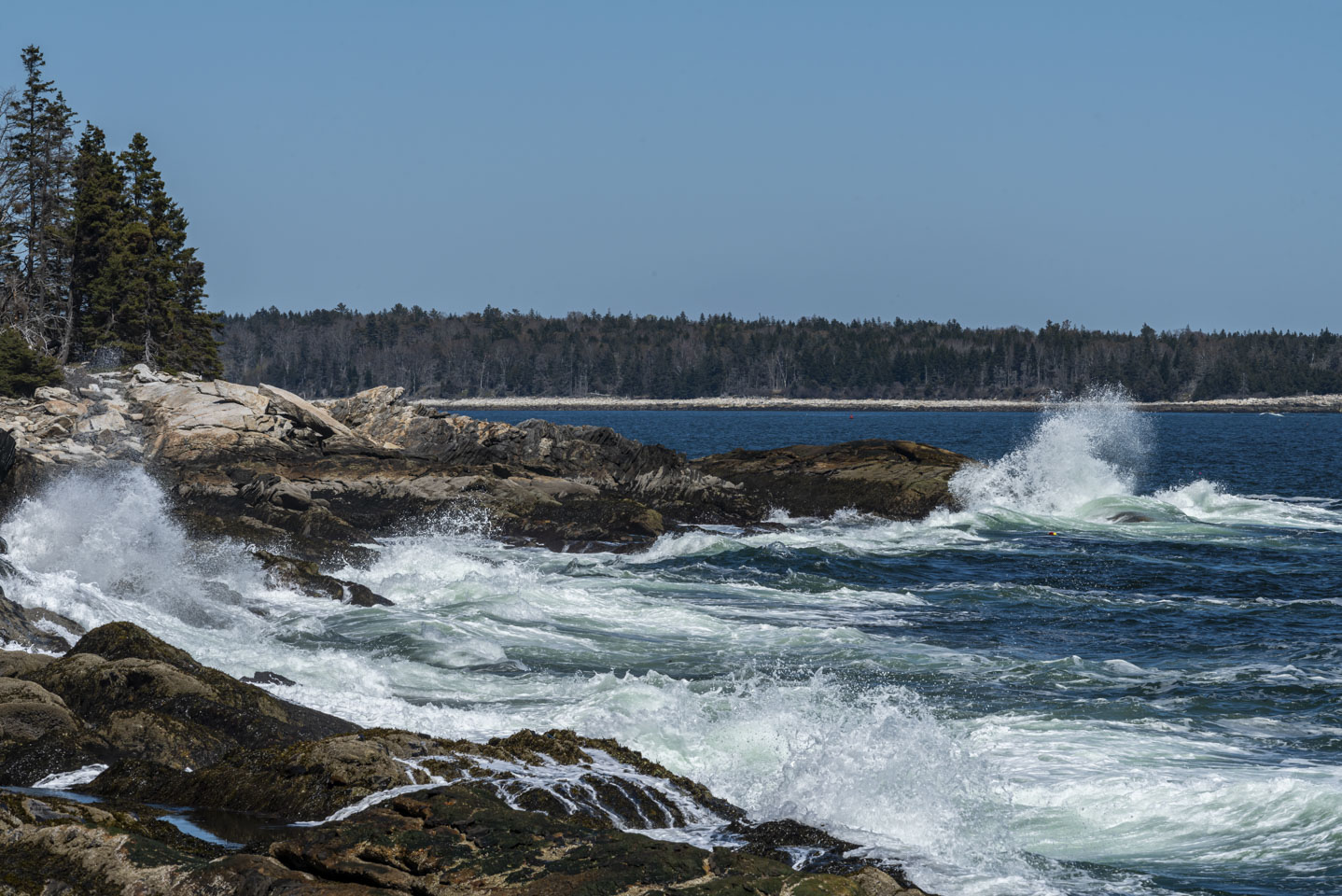
Moving to 1/8 of a second, you can still see the individual waves but the water motion is very evident.
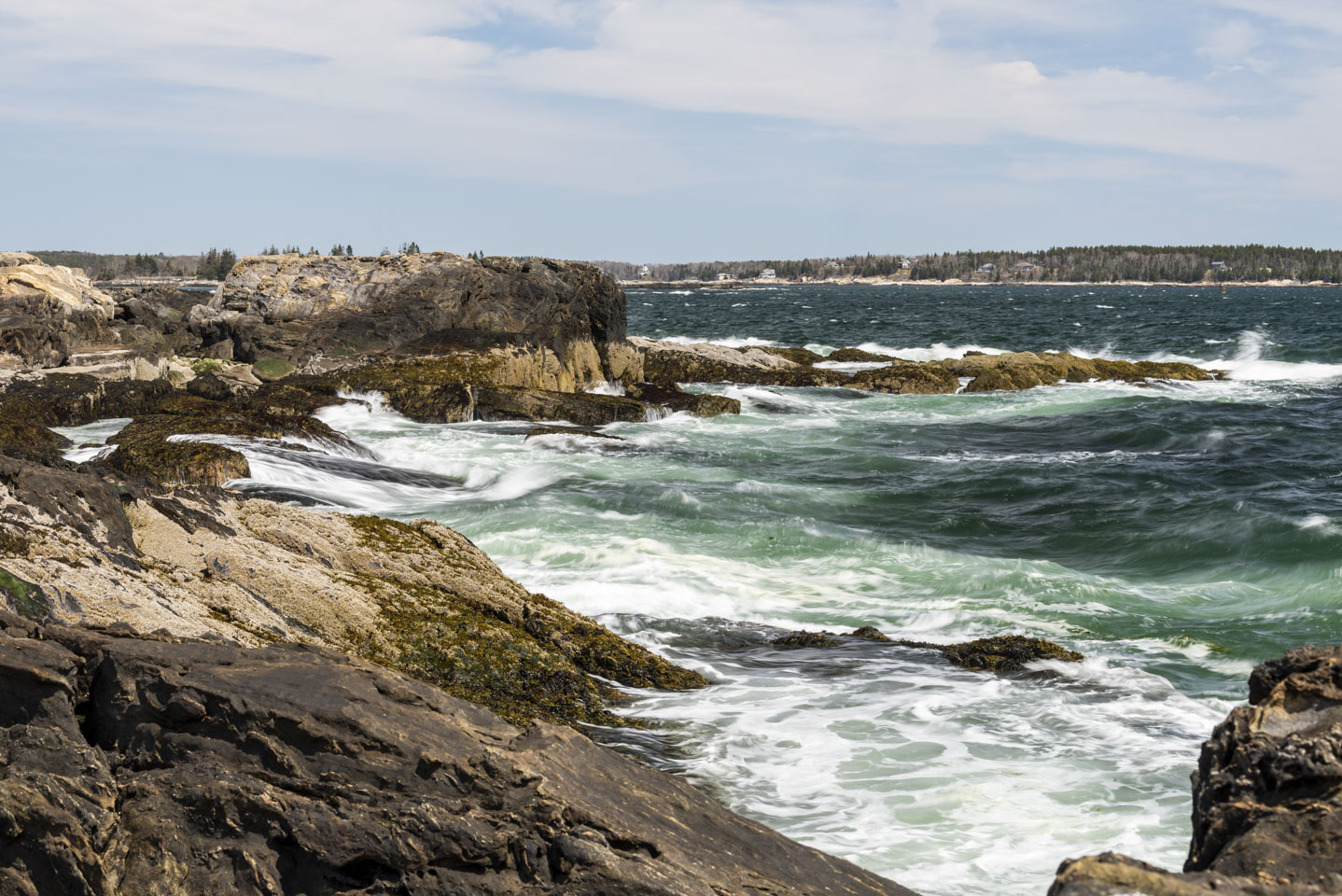
Our next example is at 1/2 of a second. The waves are starting to blur together. Notice on the right of the photo a spray of water; compare that to the sprays in the photographs above with a faster speed.
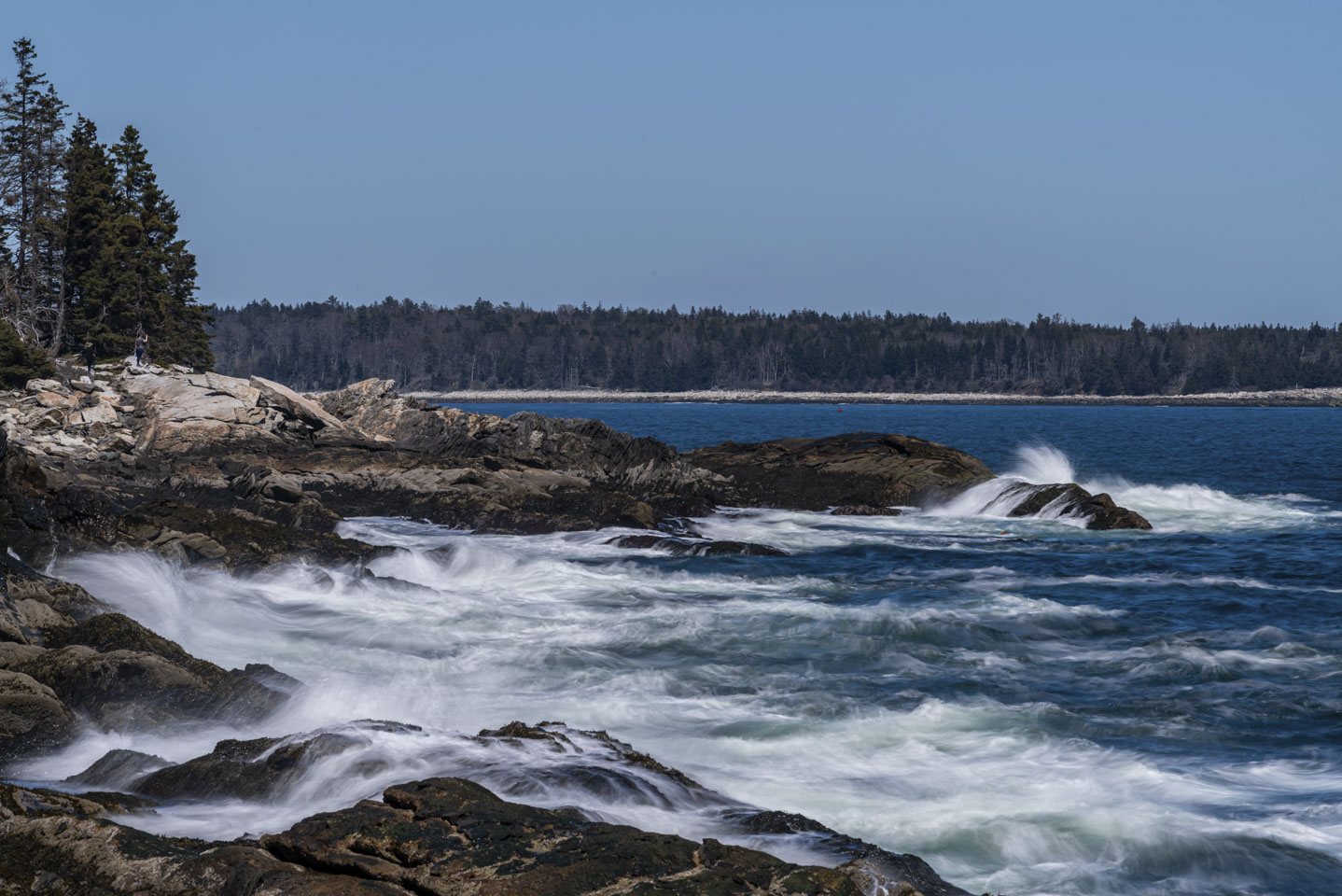
The next two photographs were taken in the same spot as each other. The 1st uses a 1 second shutter speed and the second uses 2 seconds. The blurring of the waves is continuing, and they are starting to merge together. (On the left, at the horizon line, you can see Cuckolds Lighthouse. And you will have to take our word for it that even further in the distance is Seguin Lighthouse.)
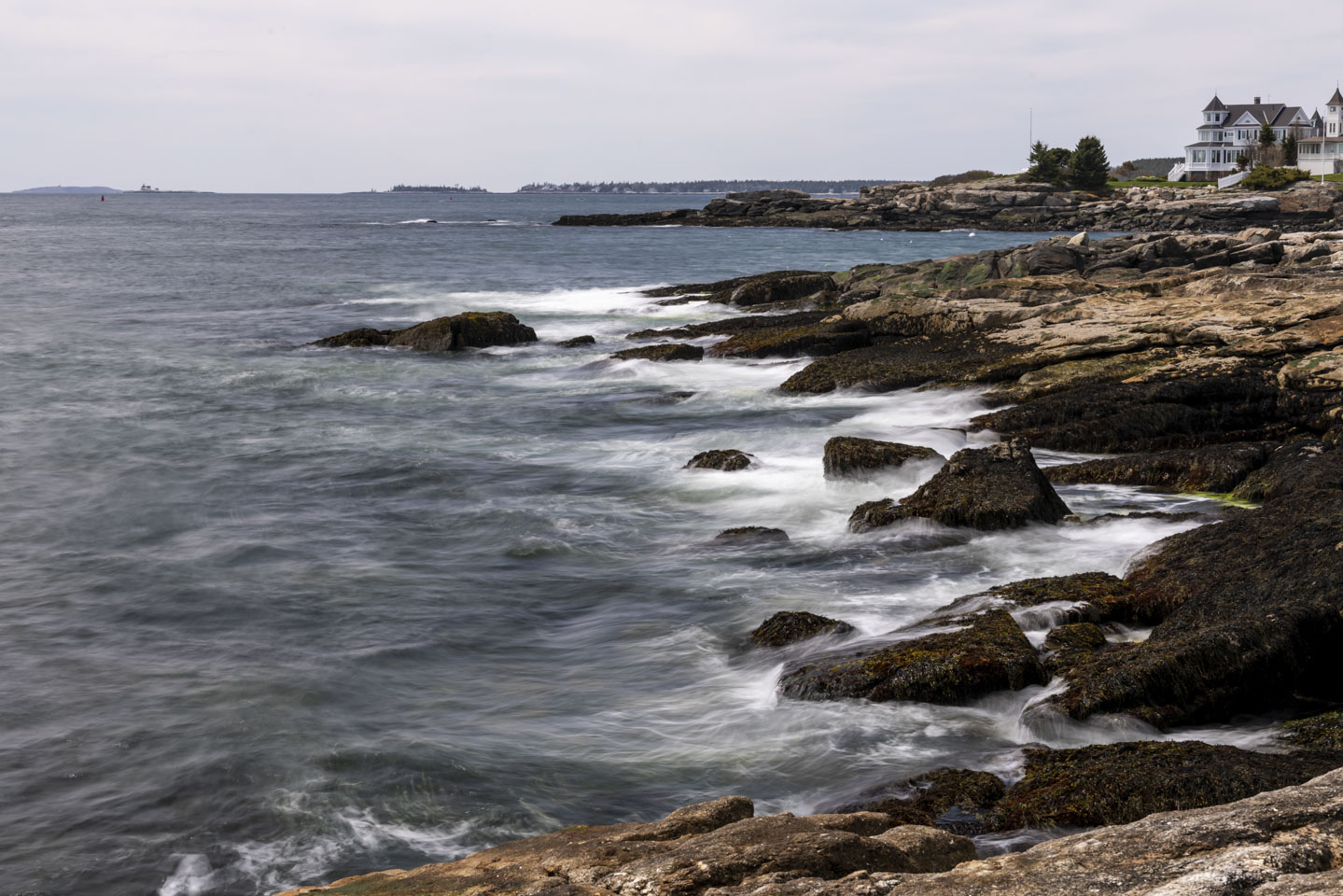
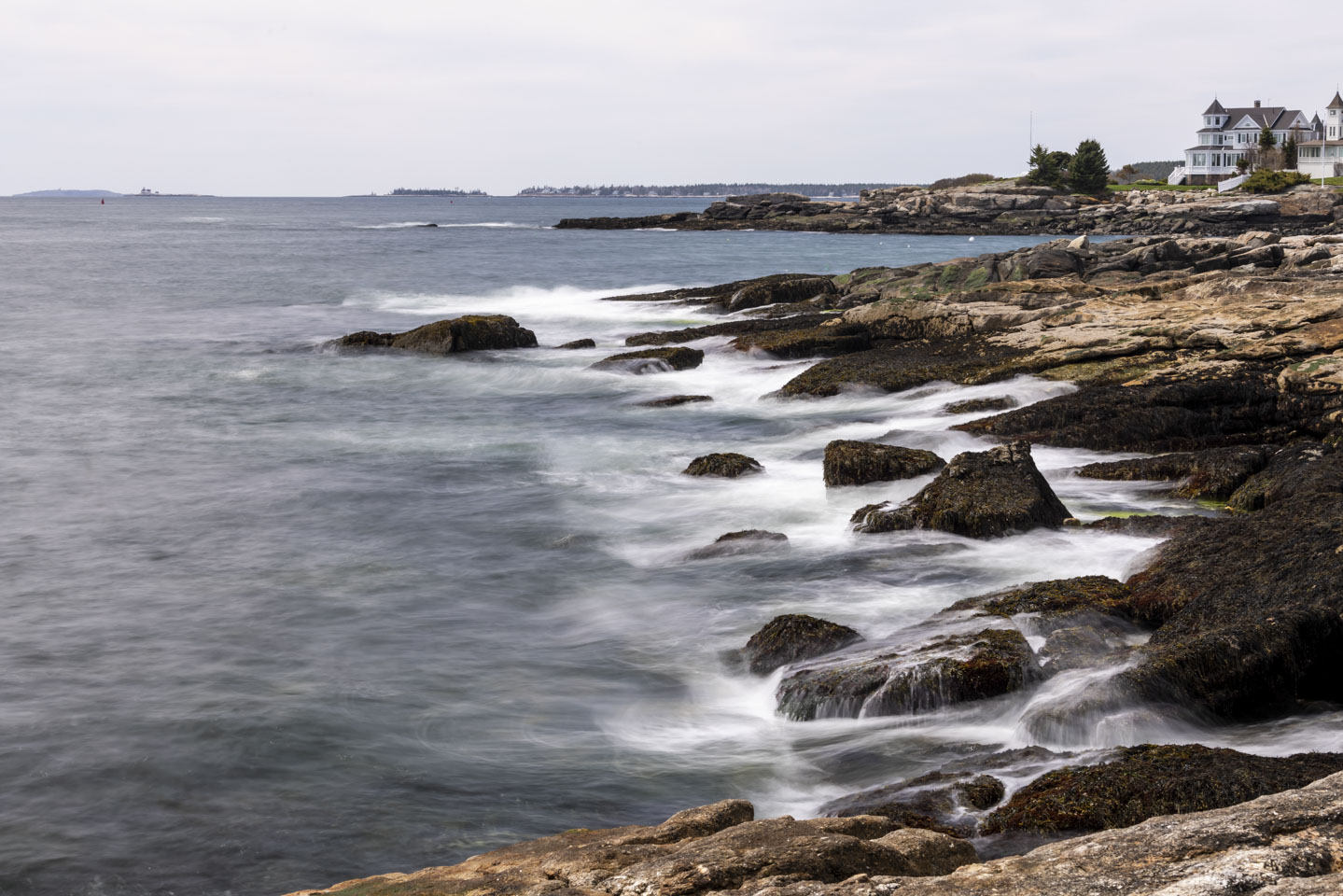
Continuing on to a 4 second shutter speed, the waves start to take on a ghostly quality. The sprays in the back of the picture now look like little mounds of fog.
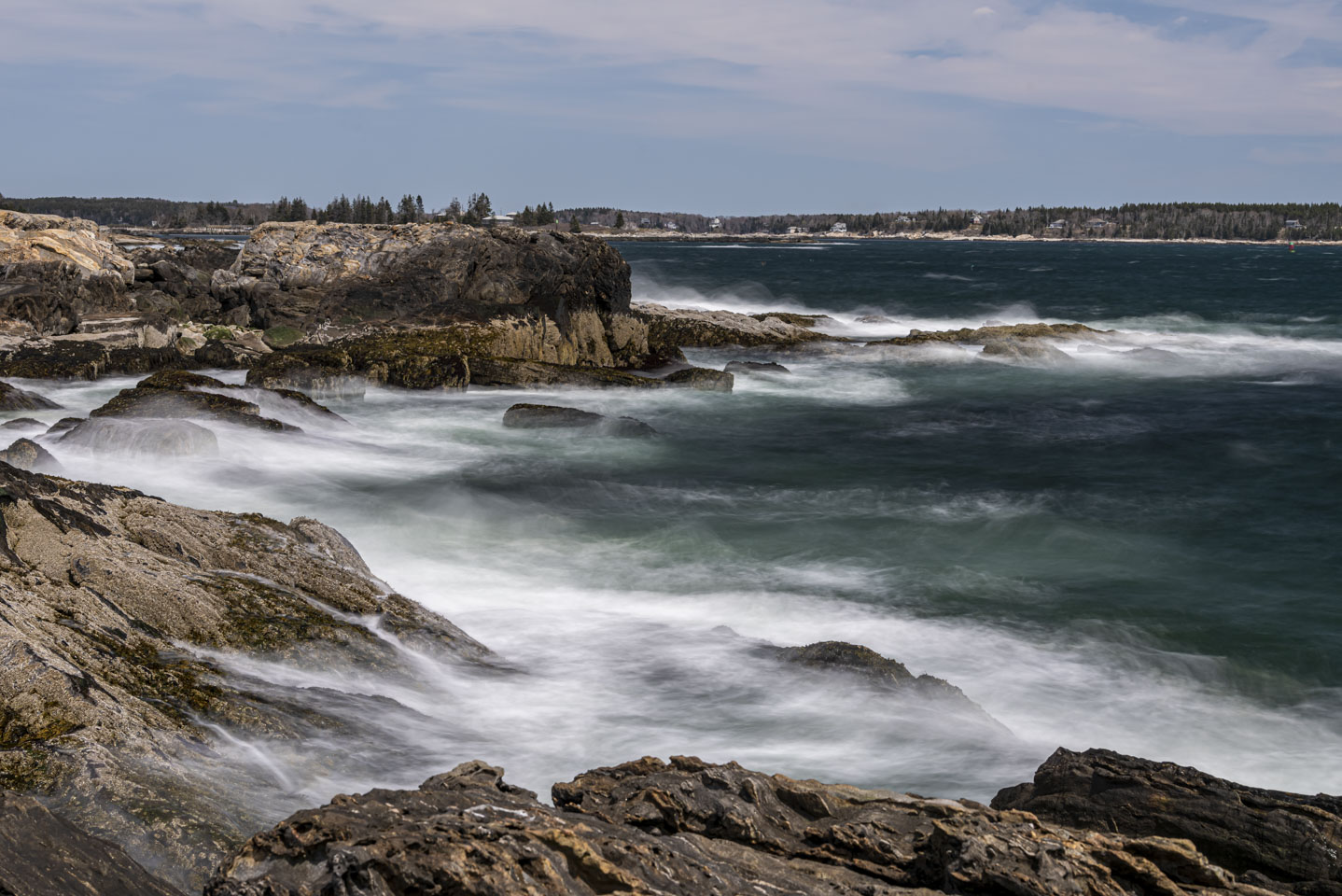
Now let’s go all the way to 8 seconds. Just as the first pictures show things we cannot see because they are too fast for the human eye, this extremely slow speed also shows a look at we cannot see. The various sprays and wave crests have merged together to form a layer of mist over the water and even on the rocks. Any individual droplets of water are distant memories from 7.9 seconds ago.
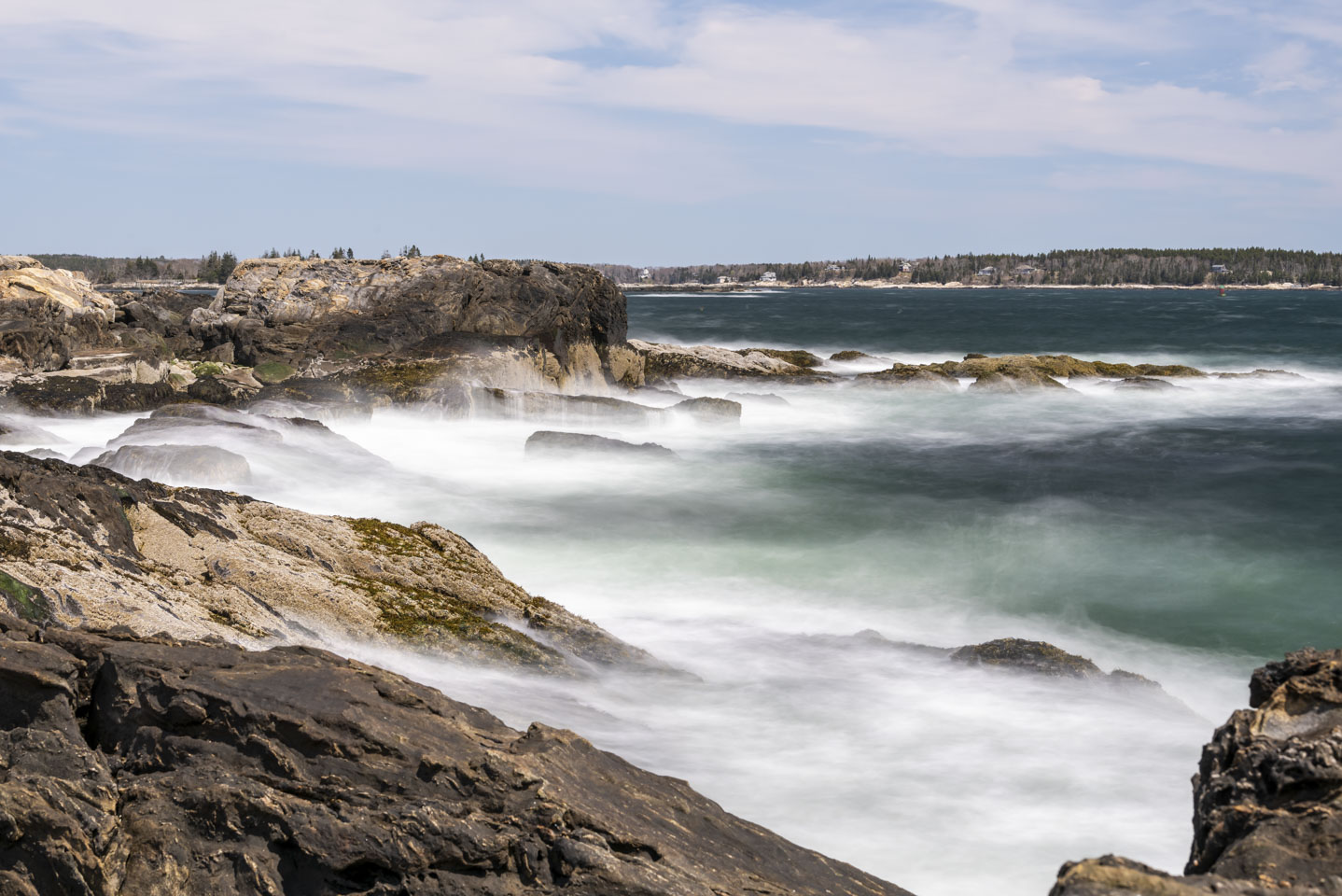
For our final comparison, we have a composite photograph. Look at the 3 sections of the scene, then continue reading .... This shows how much the character of the waves impacts the final photograph. How fast the water moves plays a big role in what the photograph looks like, as well as the path the waves take. The first two sections of the composite below were both taken with a 1 second shutter speed. The last section was taken with a 1/8 second shutter speed, substantially faster! It is difficult to tell that from the froth in the foreground, but looking further back you can see more definition in the waves.
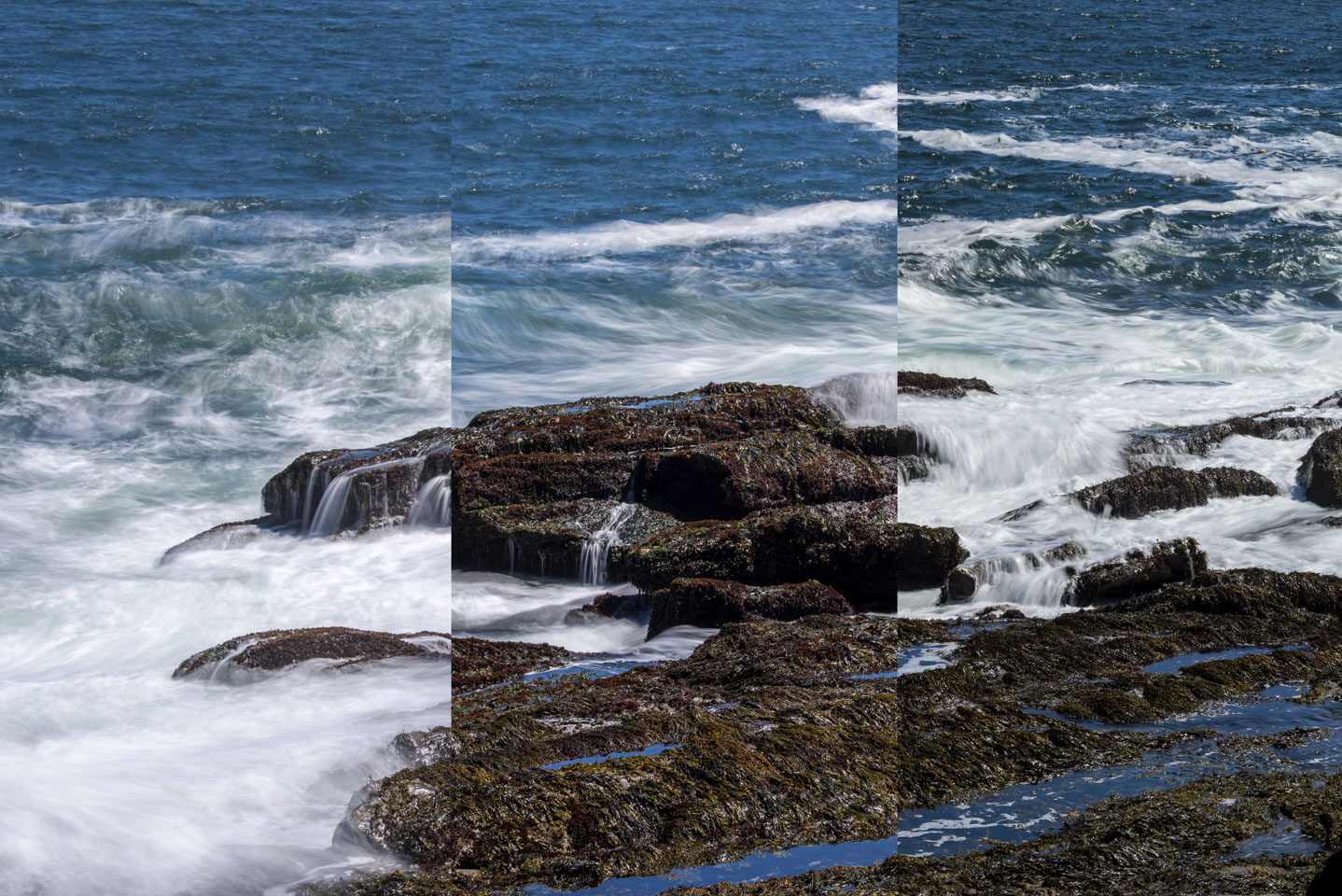
Now that we have looked at those technical aspects, lets look at some other pictures. We will start with a complete change of pace. The foam from the waves had a very sharp bend in it off the shore of LaVerna Preserve.
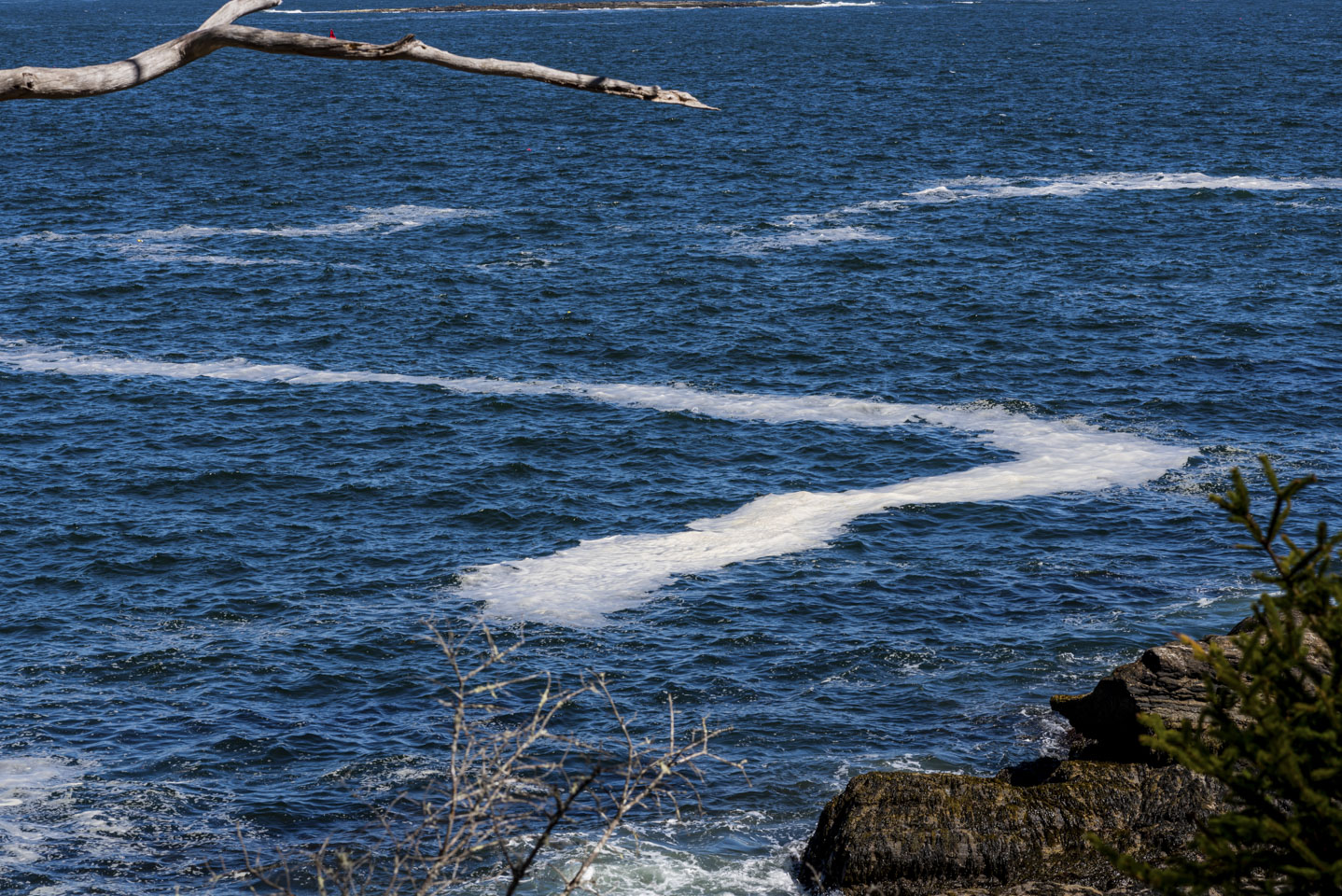
Here is Paul at the scene. The wave was already starting to lose the shape.
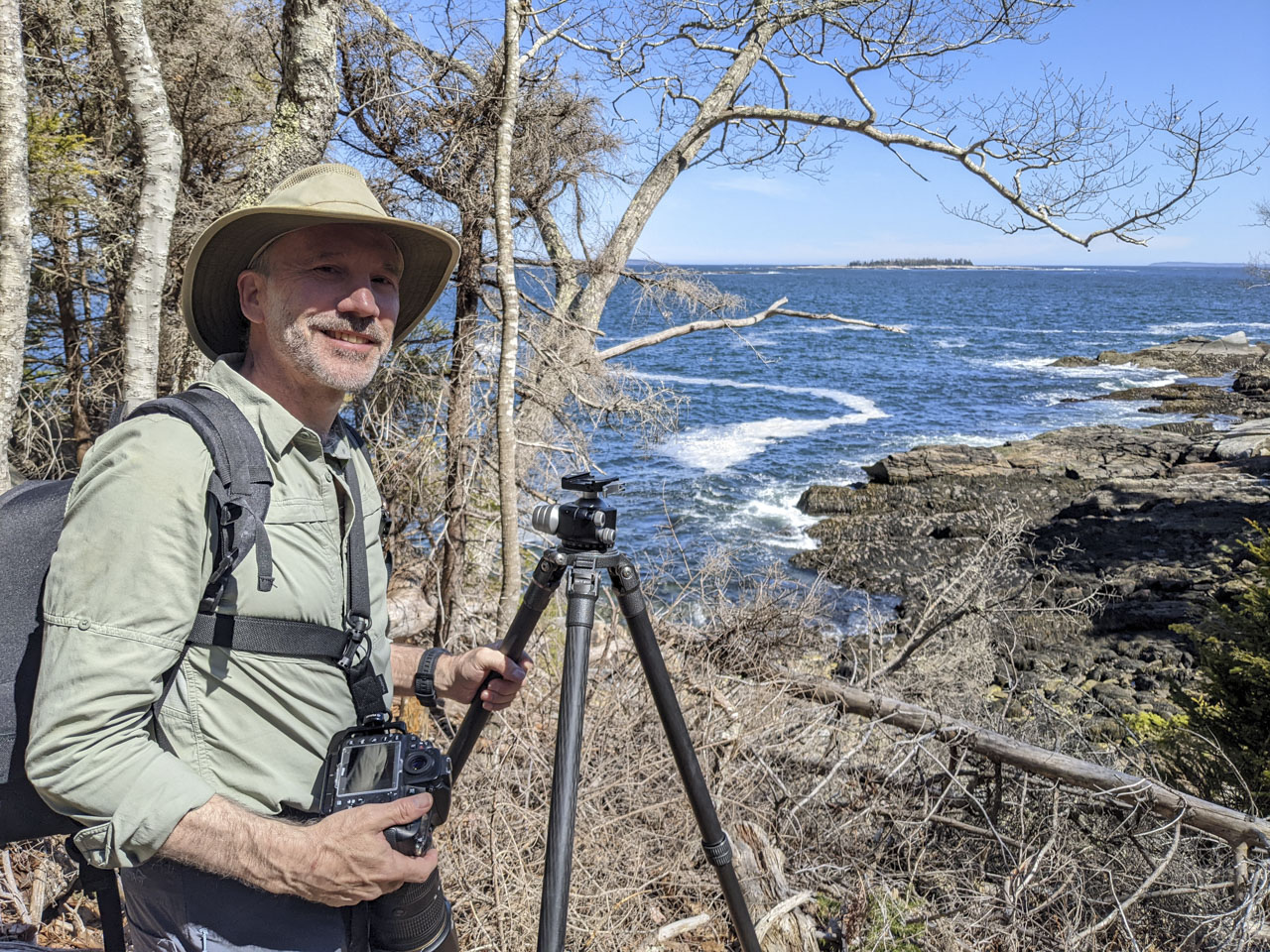
This next photo has a lot of splashing going on.
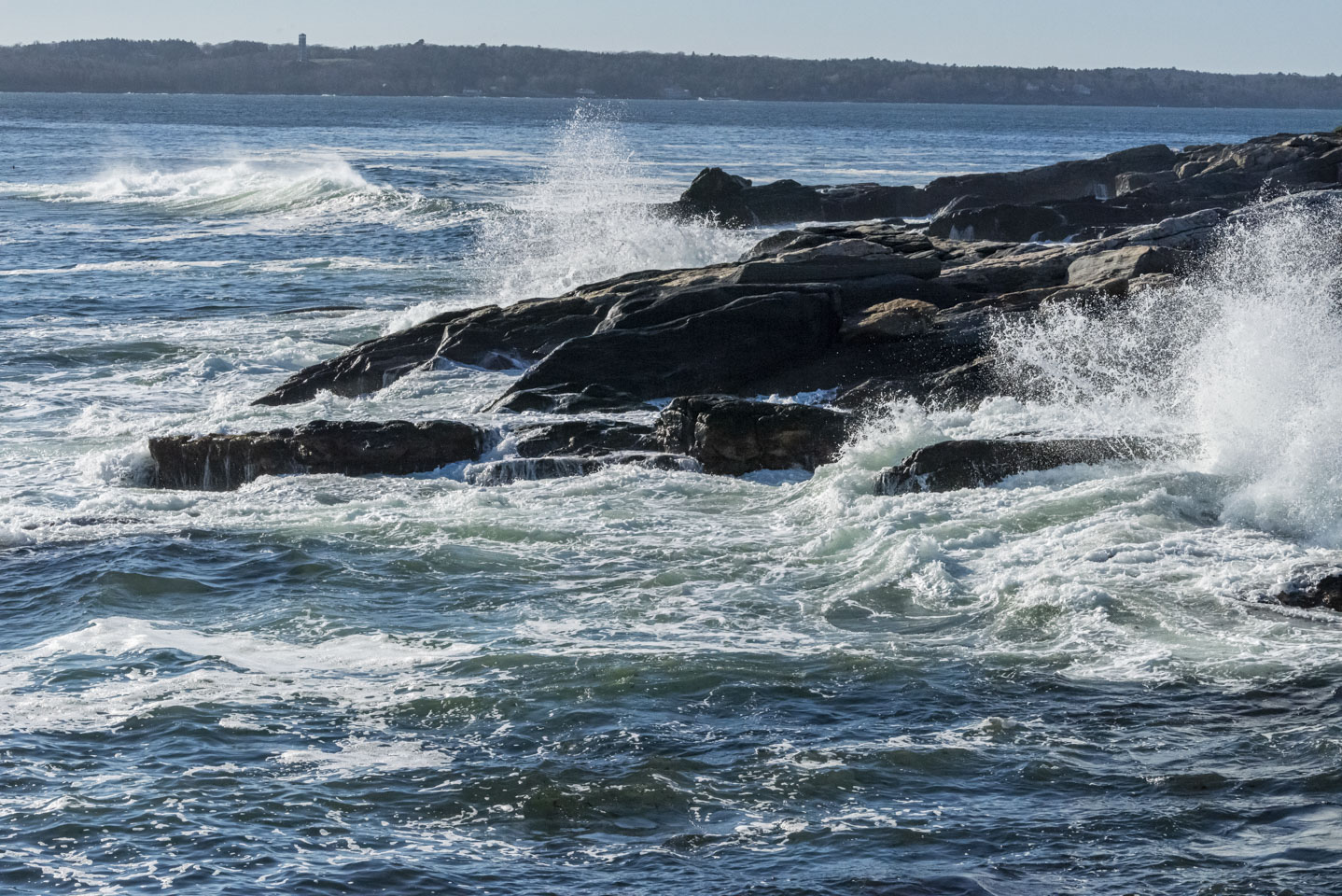
While this is the same basic scene, the swell of a wave is very visible in this picture.
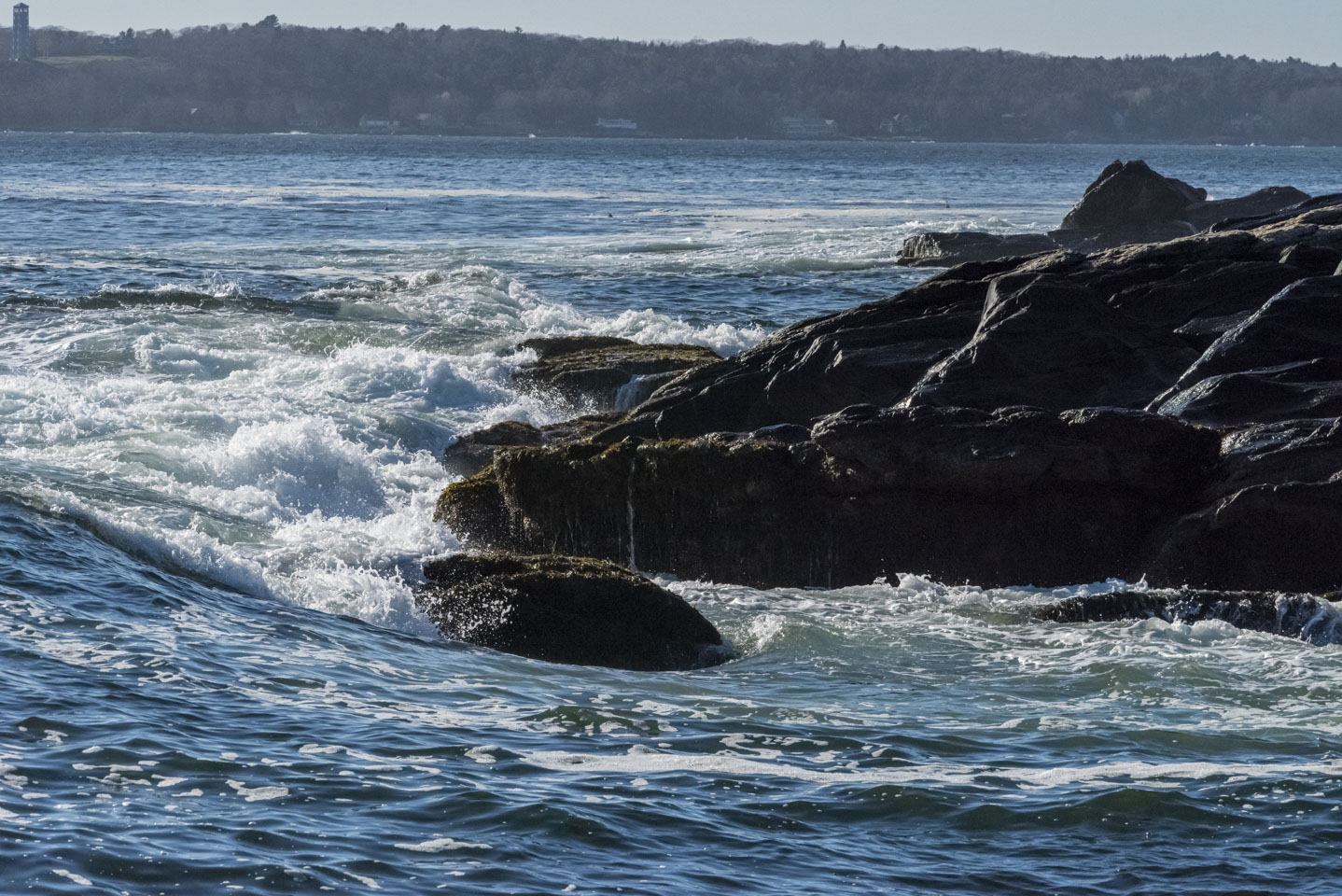
Anne in particular loves the sea-green color.
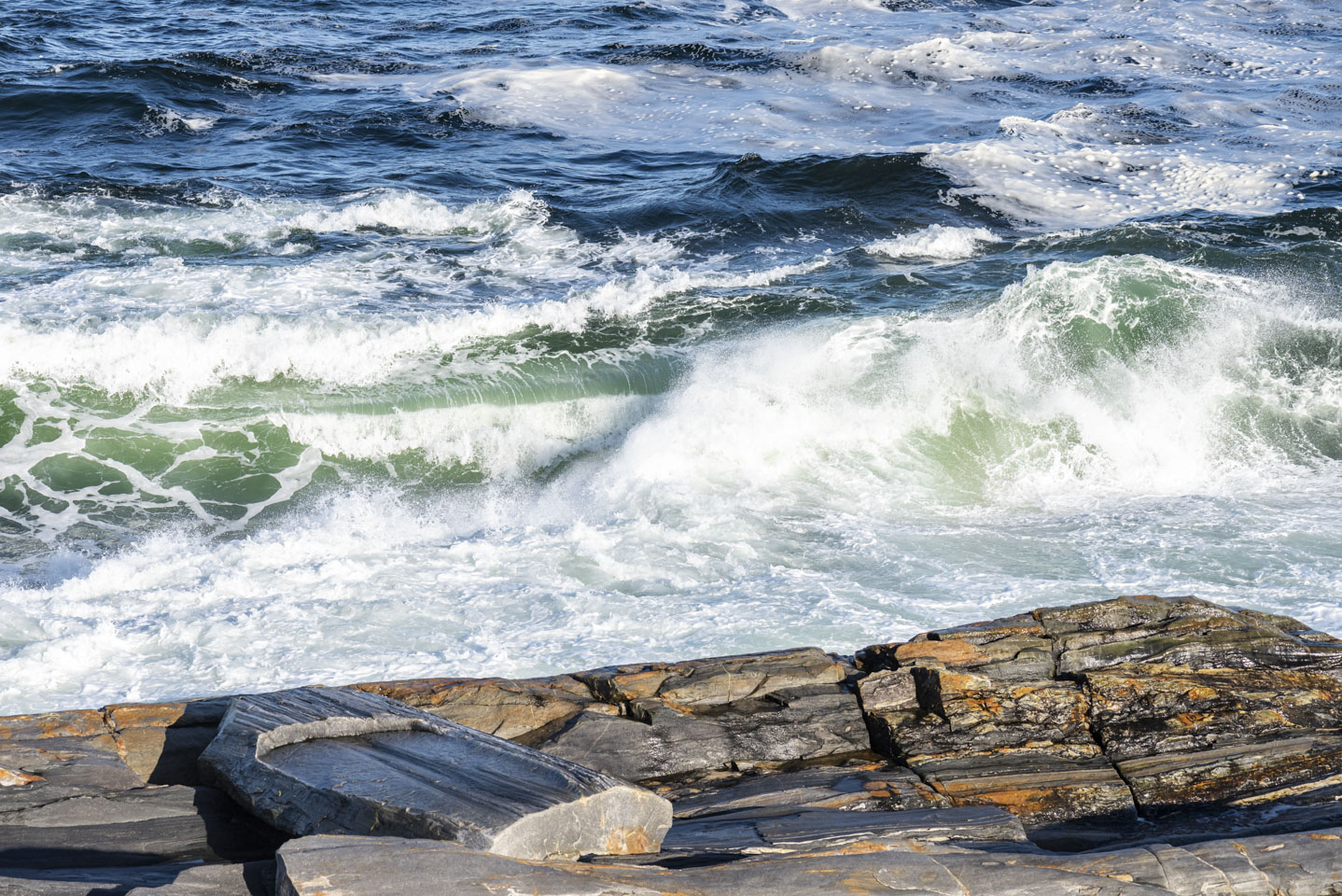
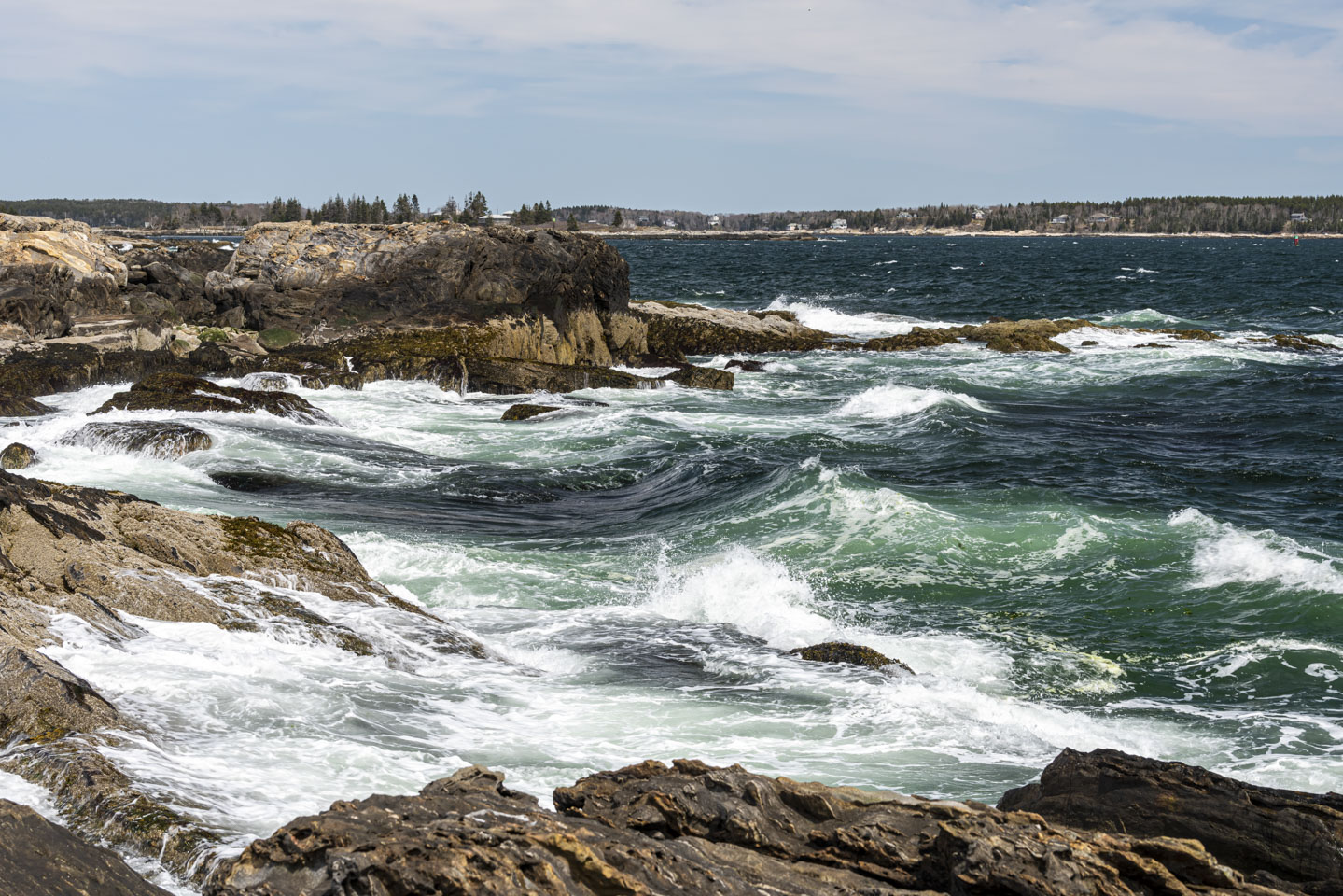
There is even a hint of that green in this next photo. If it wasn't for the rock right in front of it, this might be a good wave to catch with a surfboard.
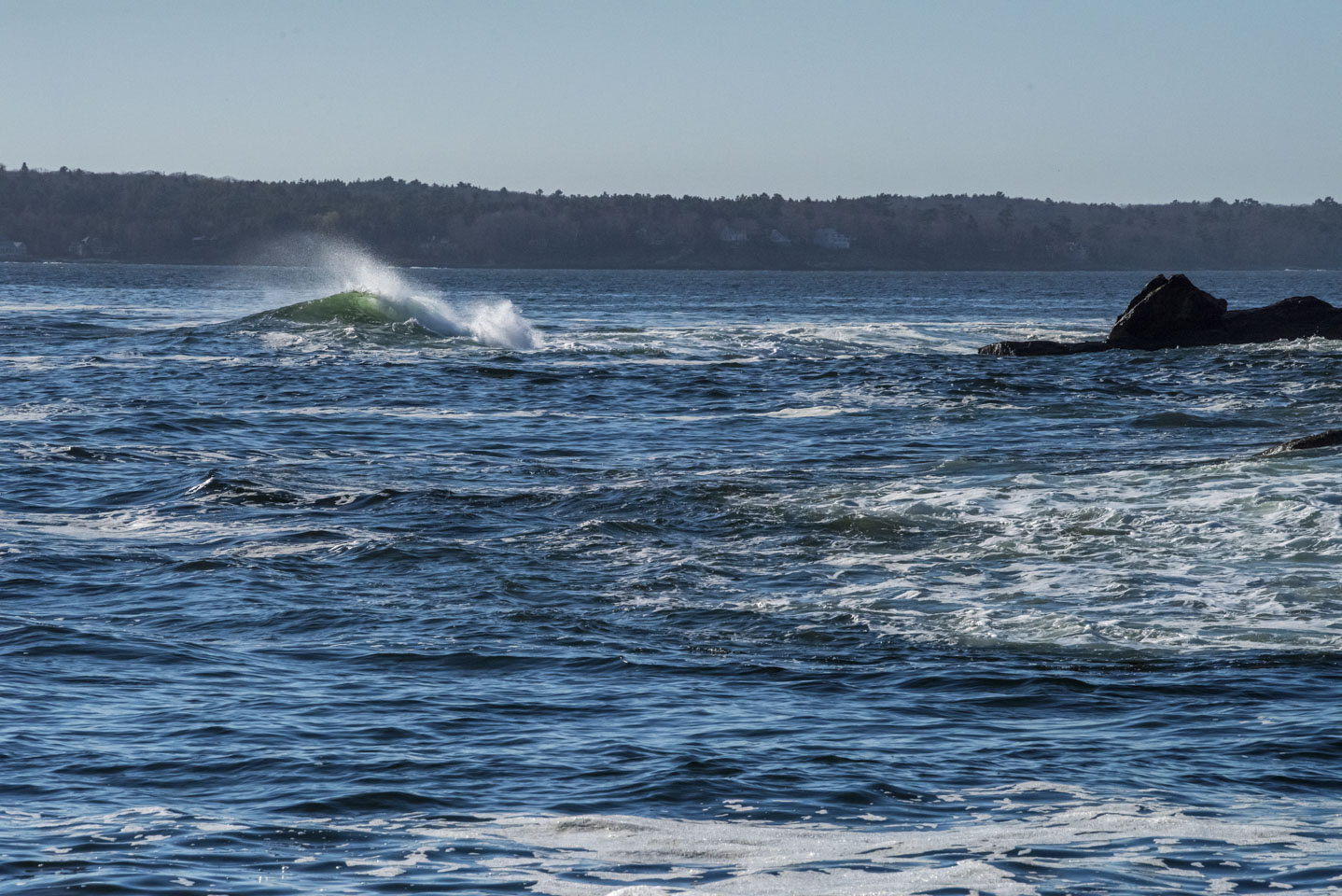
The rocks at Pemaquid run out to meet the sea.
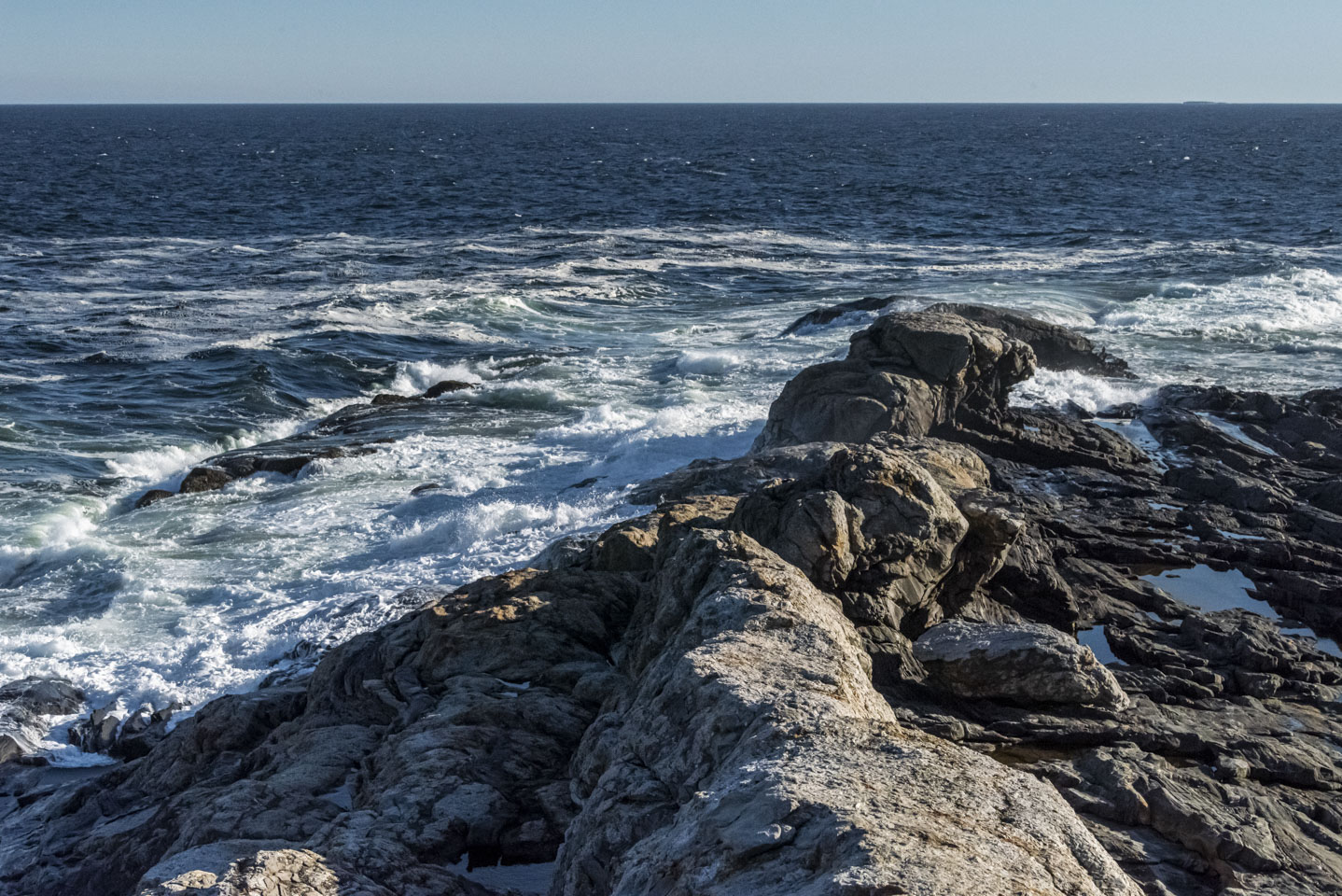
But don't let the beauty fool you. It can be dangerous if you stand too close to the water. Hopefully the only thing that happens is that you get a little wet.
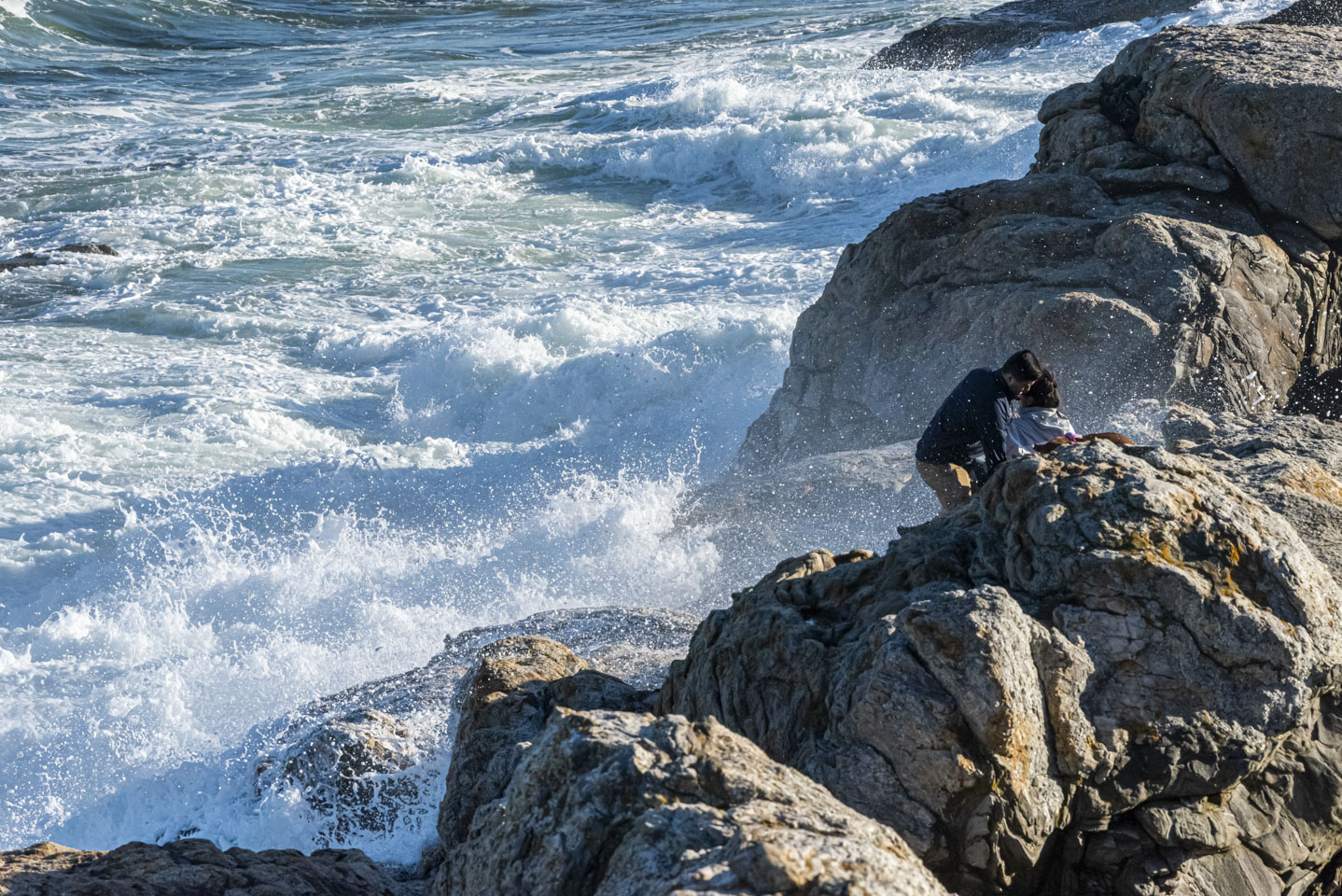
If you look closely at this next photo you can see a couple people standing safely away from these crashing waves (also in the area of Pemaquid).
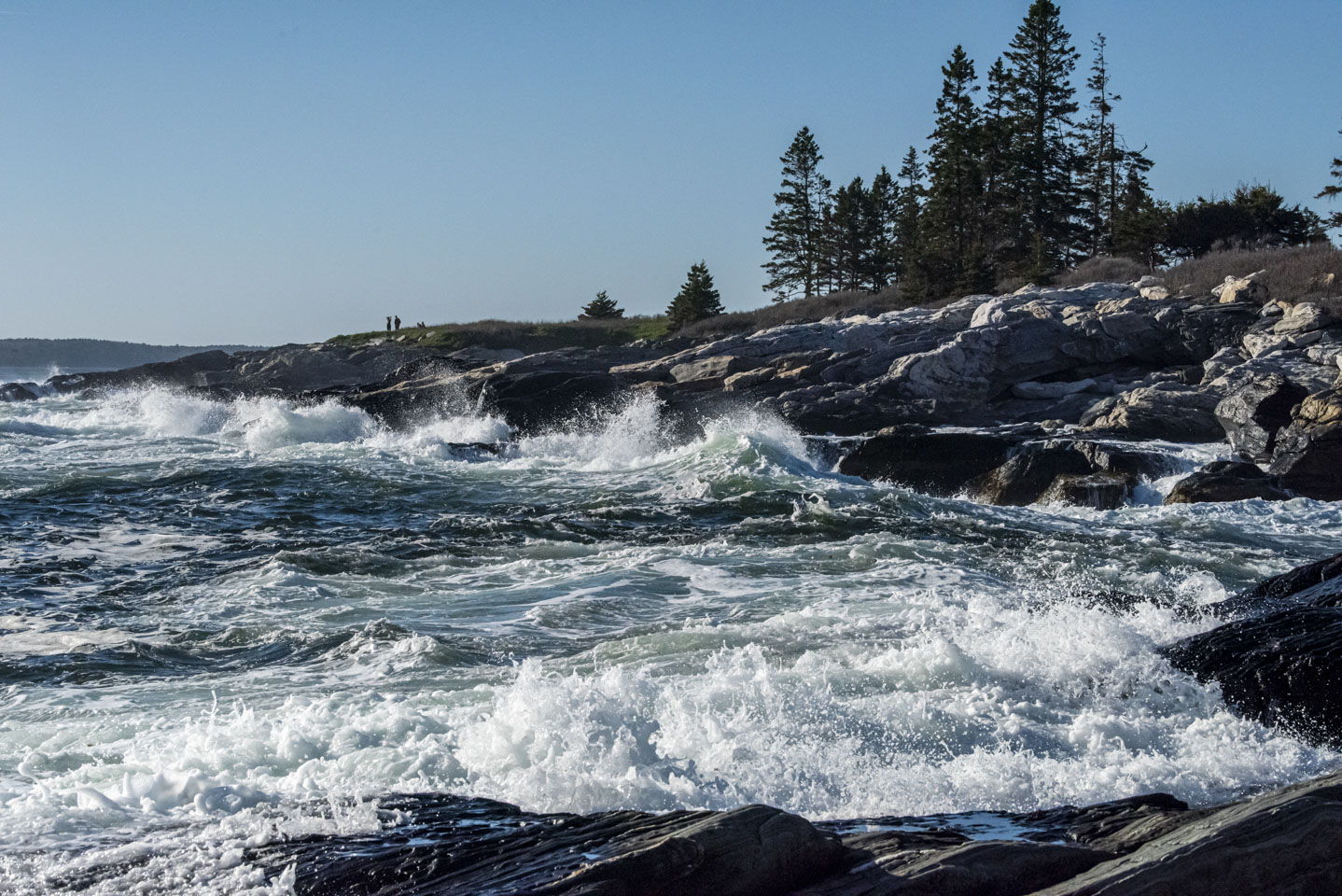
Here are a carousel of photographs that will help make it feel like you are about to get wet! Don’t worry; no photographers were soaked in the process of taking these (unlike in this photo from 2010!).
This cormorant doesn’t mind getting splashed.
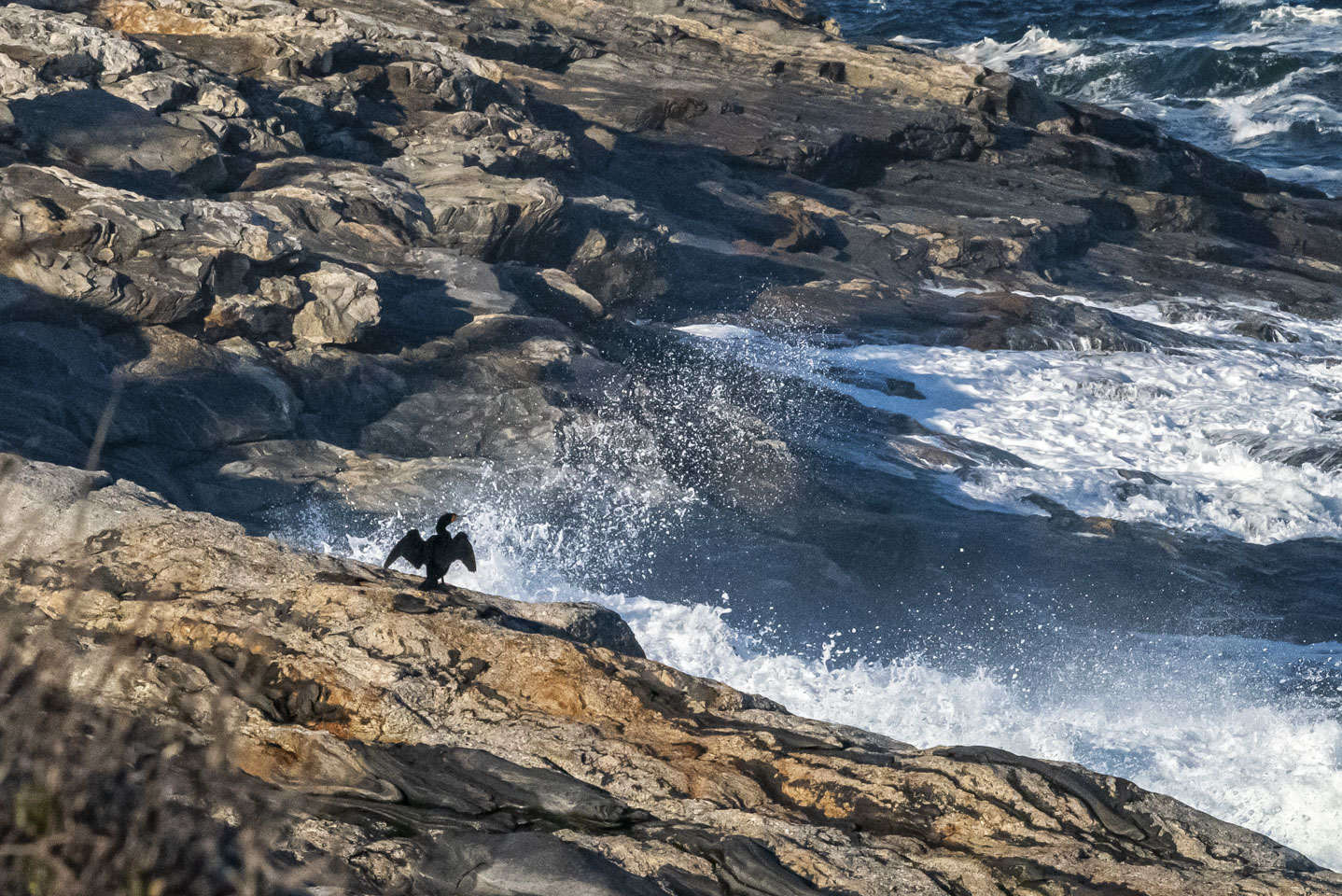
Here are a couple other classic views of the water, plus a slightly more intimate view of one wave. The first picture has, in the distance (15 miles distant) Seguin Lighthouse. You might remember it from the previous page.
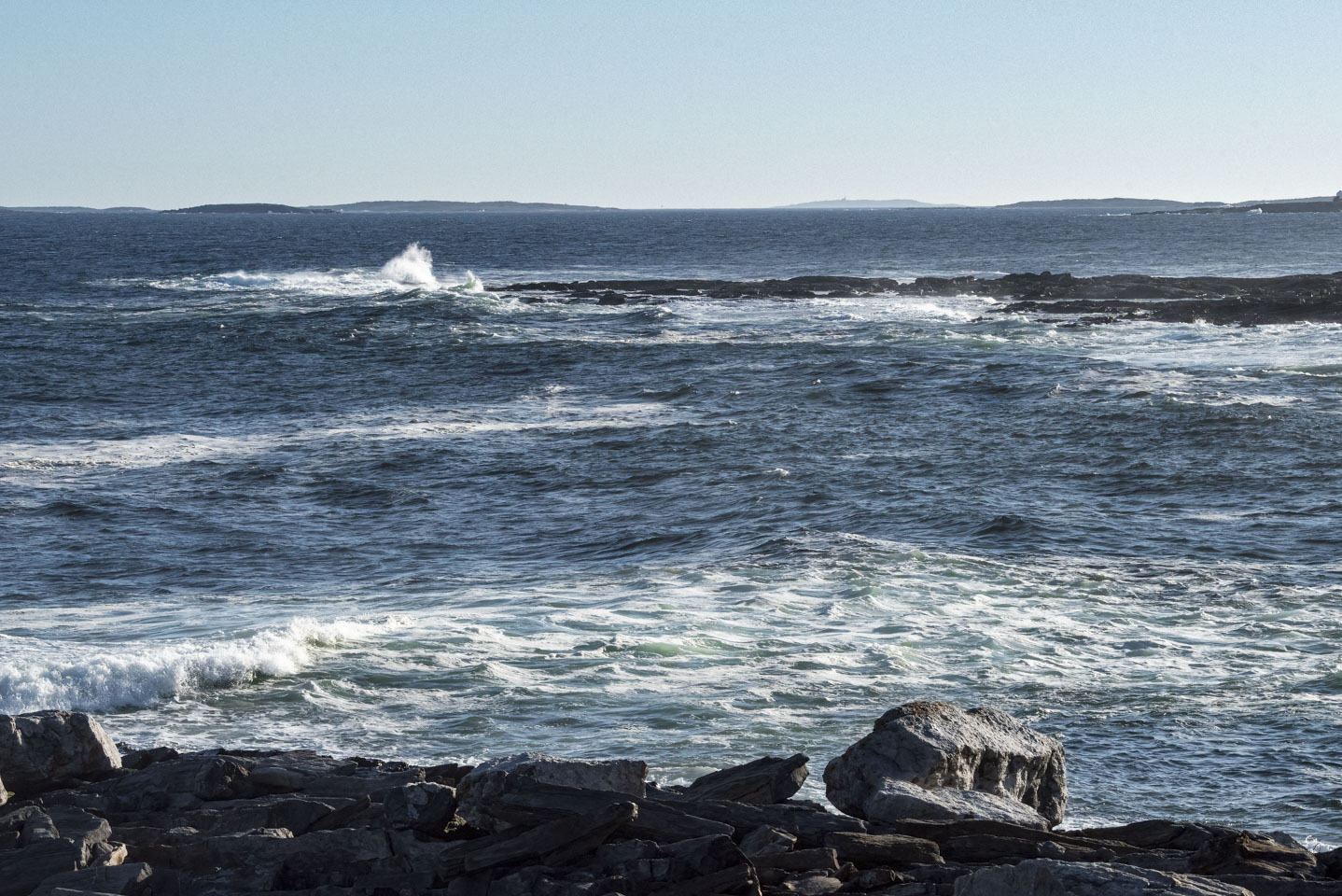
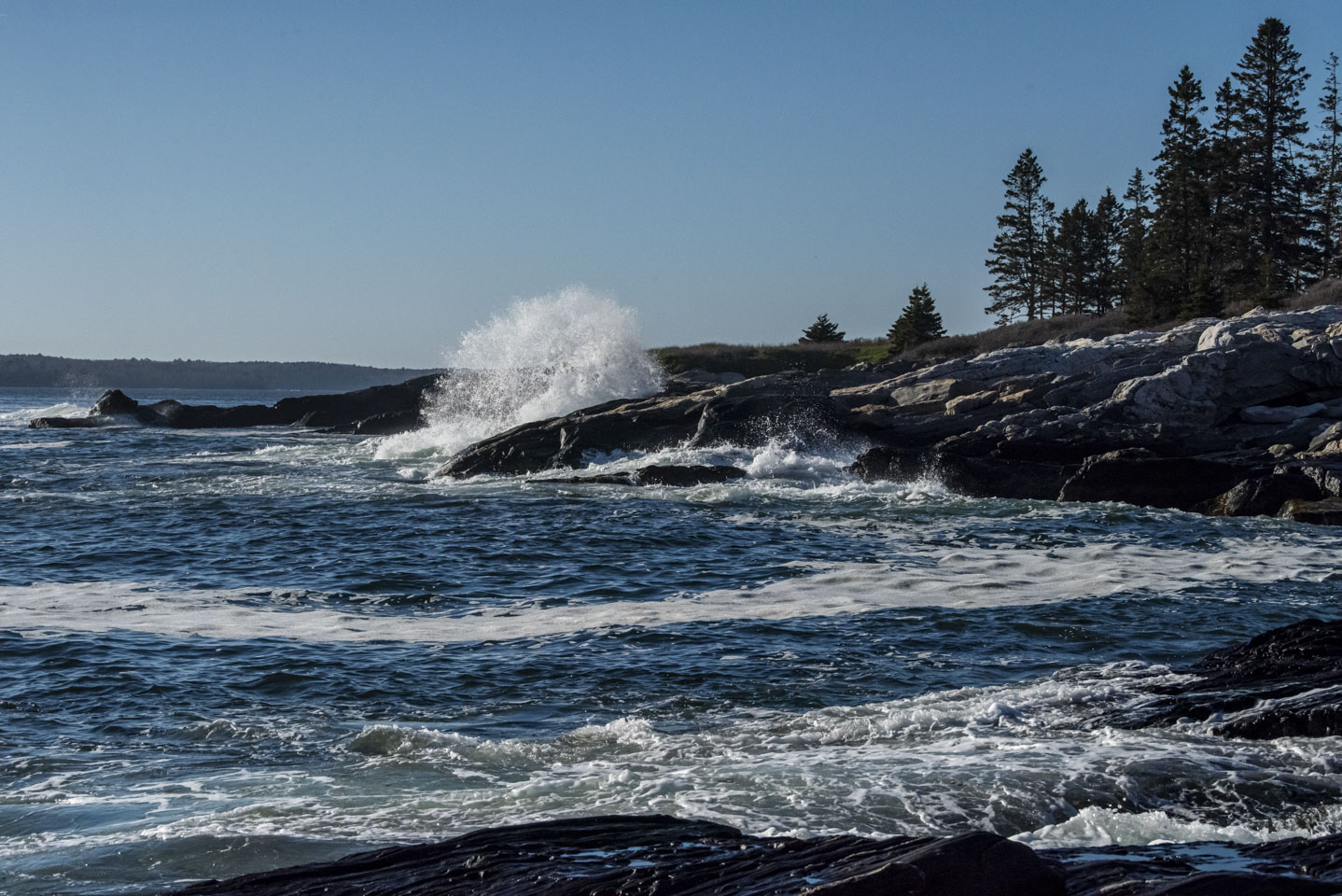
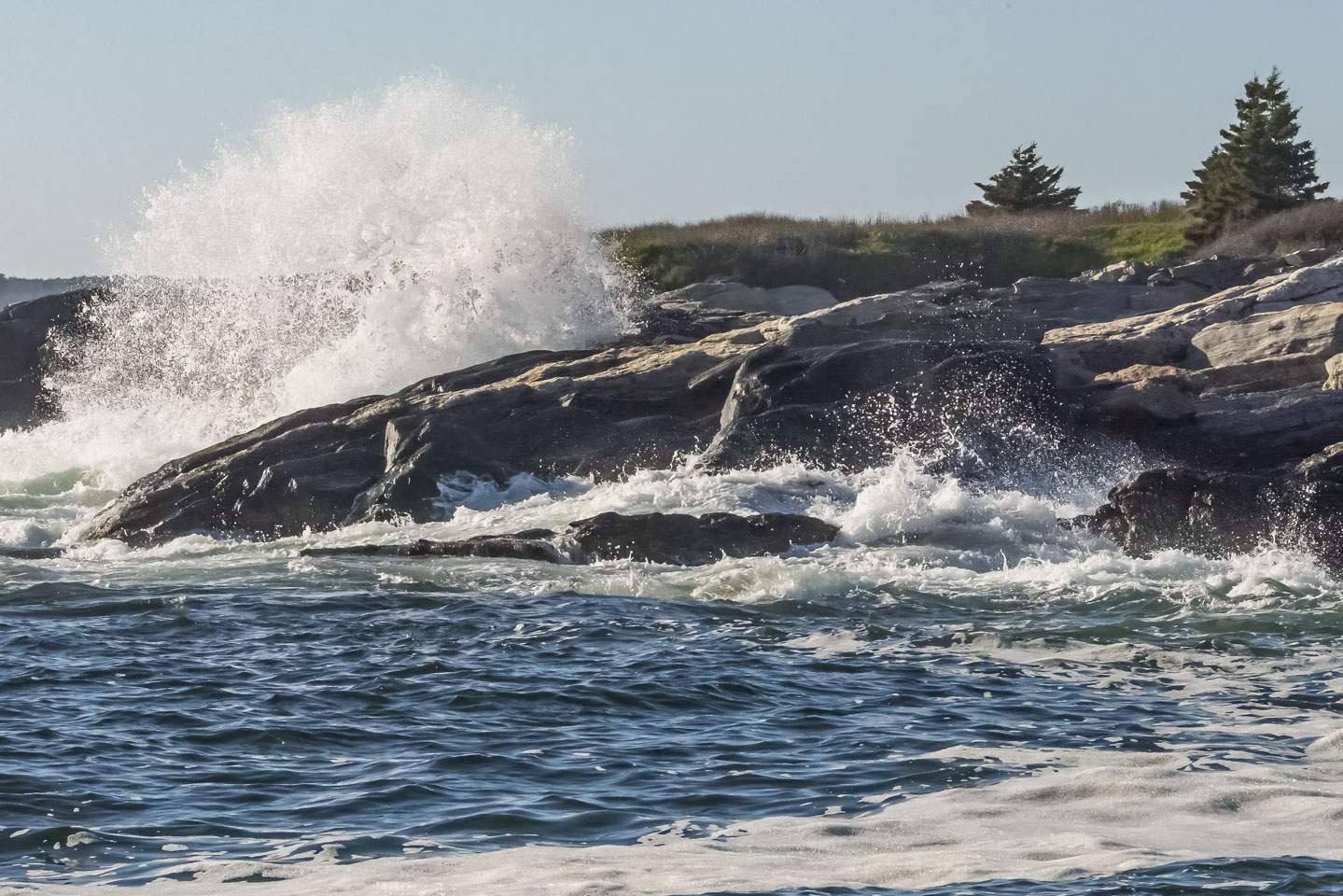
Let’s do a second slideshow of a different wave at a different spot. This one has more emphasis on the swells rather than the splashes.
If you want to actually hear the waves in addition to seeing them, here are links to 2 short videos. Both were taken near Pemaquid.
As this page draws to a close, it is fitting to show a couple photographs from some days as they were drawing to a close. This first picture brings back a touch of the sea green color.
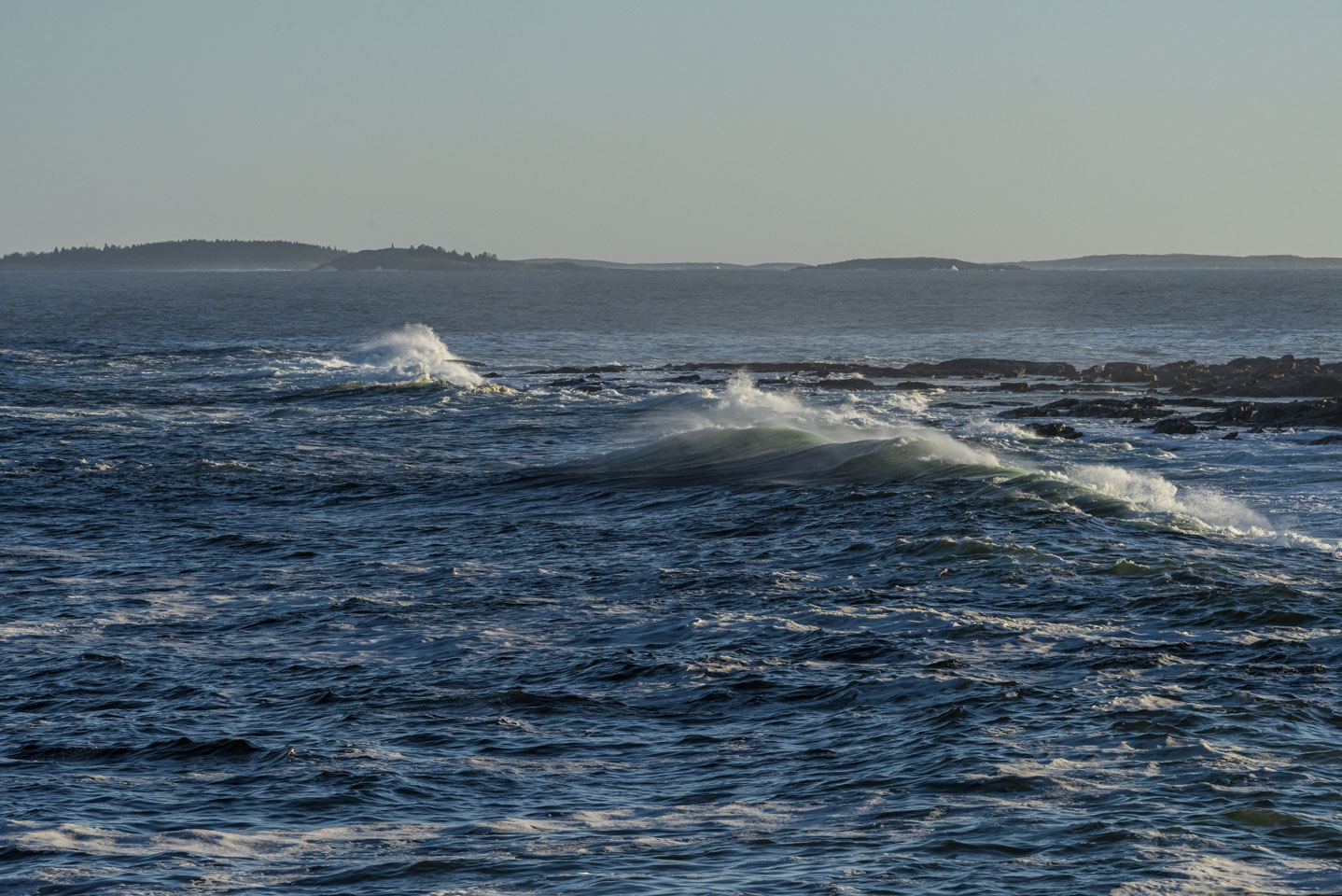
And finally, a picture of a gentle wave with Ram Island Lighthouse in the background.
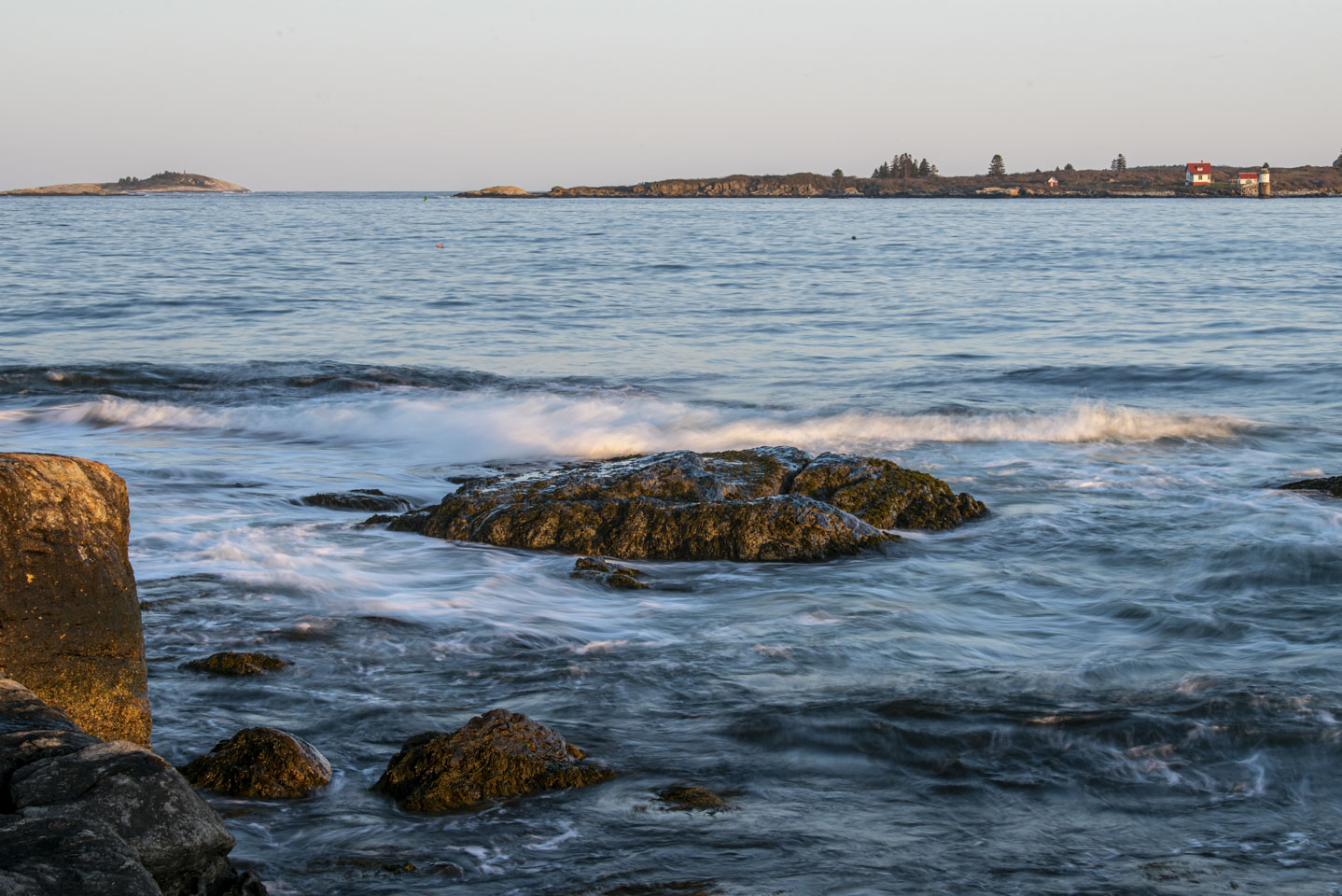
Updated June 2022